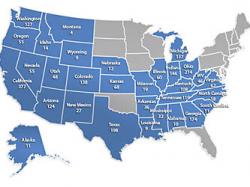The Kroger Company Supports Pork During National Pork Month
November 6, 2009 | 2 min to read

The Kroger Company, during October, partnered with U.S. pork producers to
promote the value of pork during National Pork Month. To support National Pork
Month, Kroger, the nations largest traditional supermarket retailer, is
offering specials on fresh pork cuts at great prices throughout its family of
stores through November 7.
In addition to special prices The Kroger Company is offering a $1 coupon off any
package of fresh pork at the point of sale and from meat department associates.
The Kroger Companys marketing activities were integrated into a national fall
marketing campaign by the National Pork Board, which promotes pork on behalf of
all 70,000 U.S. pork producers. “Customers today are looking for affordable,
nutritious options to create convenient meals at home and pork offers shoppers
great variety and value,” said Mark Van Buskirk, vice president of meat and
seafood for Kroger.
Chris Novak, chief executive officer of the National Pork Board, applauds the
Kroger promotion. “We are aware that the national recession has caused consumers
to squeeze more value from their food budget. Pork has always been a great
value, but Krogers ability to extend that value through roughly 2,470
supermarkets during October is greatly appreciated by pork producers, who have
been experiencing an extended period of economic distress. We have great retail
partners across the country, but we are especially appreciative and fully
supportive of Krogers activities,” Novak said. “We expect them to have a very
positive impact.”
A Glance at The Kroger Company
- The Kroger Co. operates 2,470 stores in 31 states under nearly two dozen
banners. - Measured by total sales, Kroger is one of the nations largest supermarket
operators.
Kroger stores by Region
East: Kroger, City Market, Dillons, Gerbes, Hilander, Jay C, King Soopers,
Owens, Pay Less, Scotts
West: Food 4 Less, Fred Meyer, Frys, Ralphs, OFC, Smiths, Foods Co.
At year-end 2008, Kroger operated in 42 major markets and held the number 1 or 2
position in 39 of those markets. The top five major markets are Los Angeles,
Atlanta, Houston, Seattle, and Phoenix.
The National Pork Board has responsibility for Checkoff-funded research,
promotion and consumer information projects and for communicating with pork
producers and the public. Through a legislative national Pork Checkoff, pork
producers invest $0.40 for each $100 value of hogs sold. The Pork Checkoff funds
national and state programs in advertising, consumer information, retail and
foodservice marketing, export market promotion, production improvement,
technology, swine health, pork safety and environmental management. For
information on Checkoff-funded programs, pork producers can call the Pork
Checkoff Service Center at (800) 456-PORK or check the Internet at pork.org.
Photo Credit: National Pork Board
Photo Caption: The Kroger Company Retail Locations 2nd Quarter 2009
Source:
National Pork Board
